Palermo is one of the most influential cities in Southern Italy; a provincial and regional capital lying on a wide inlet of the Tyrrhenian coast and at the foot of Mount Pellegrino, on the edge of a fertile and verdant basin.
Thanks to its position, Palermo has always constituted a strategic location for merchants and maritime traffic. In fact, the port of Palermo is still one of the busiest of Italy, thanks to its industries and flourishing trade.
What makes this remarkable city one of Italy’s most sought-after destinations is its artistic importance, alongside the historical testimonies it preserves. A privileged climatic position and the magical landscape offered by lush nature reserves, national parks, and different forms of relief also constitute strong attraction points.
The wealth of artistic and historical resources confirms the important millenary role Palermo played in the trade between East and West. The city was a landing place for different races and languages, all of which contributed to shaping its unique spirit and strong cultural identity. The city has a distinct character and over time it has been able to combine the best of the various ruling civilizations, each imparting its influence on the local art, architecture, and cuisine.
Indeed, Palermo suffered numerous dominations throughout history. From the Greeks to the Arabs, from the Normans to the Spanish, all of these conquests led Palermo to take the shape of a rich, inestimable confluence of forms and styles, such as Gothic and Baroque, that blended into highly original artistic, architectural, and decorative creations.
The original Phoenician name of the city was Zyz, while the current name, Palermo, is believed have derived from a Greek word meaning “all port,” a reference to the city’s natural harbor. The original city center was founded between two waterways that no longer exist, and Palermo experienced many periods of splendor under numerous civilizations, such as the Romans, Arabs, Normans, Swabians, and Spanish. Yet, Palermo’s history is much older than this, going back thousands of years.
PREHISTORY OF PALERMO
Human presence in Palermo has been attested since the Paleolithic Era by interesting cave paintings discovered in the Addaura Caves during the twentieth century. These paintings show dancing figures participating in a rite, perhaps under the supervision of shamans. Despite this finding, the origin of the initial settlers still remains unclear.
Palermo, as we know it today, was founded by the Phoenicians under the name Zyz, meaning flower, and was among the most important Phoenician colonies in Sicily. At the time, the area was an important commercial emporium and the support base for northwestern Sicily.
Some scholars do not fully support the theory of the Phoenician name, but many coins from the Punic period that were found in Palermo carried this word on them. Since Palermo was one of the three Punic cities of Sicily, it is very likely it had its own currency, thus the theory of the name. Furthermore, this name would also be linked to the original conformation of the city, that was cut by two rivers in a profile reminiscent of a flower.
Despite its original name, what is certain is that Palermo acquired a certain commercial importance thanks to its position on the banks of the two rivers, Kemonia and Papireto.
The city engaged in many wars during its early years, above all against the Greeks of Sicily, and it represented an important ally of Carthage during the Greek-Punic wars.
Nevertheless, the Greeks gained great influence over the entire island and renamed Palermo from Zyz to Panormos. The second name is still linked to the two rivers that once defined the landscape of the settlement, referring to the natural port they created.
Despite Greek influence, Palermo officially remained under Phoenician control until the First Punic War, when Sicily was conquered by the Romans. In fact, it is precisely Palermo at the center of one of the main clashes between the Carthaginians and the Romans who besieged the city and took control in 258 BC. A Carthaginian military official named Hasdrubal tried to reconquer the city but was defeated by a Roman consul. Another attempt was carried out in 247 BC, however, the city stayed loyal to Rome. As such, the remaining Carthaginians were forced to abandon the territory for good.
The Roman period was surprisingly tranquil for Palermo, which was now part of the Roman province of Syracuse and was given the authority to mint its own coins. With the subsequent division of the territory, Palermo was attributed to the Western Roman Empire.
Evidence of the Roman city of Panormos’s prestige is constituted by opulent buildings and beautiful mosaics in the area of Piazza Vittoria, including the remains of a theatre that existed until the Norman age.
HISTORY OF PALERMO
While Palermo was an important Roman colony and the granary of Rome during the Imperial Age, the city experienced a strong decline after Vespasian’s reign, suffering barbarian invasions that culminated with the sacking of the city in 445 AD by the Vandals. Eventually the city fell to the Ostrogoths led by Odoacer and Theodoric.
In 535, Belisario, a Byzantine general, conquered Palermo, subtracting it from the Ostrogothic Kingdom, and marking the beginning of the Byzantine period that lasted until 831, when the Arabs landed near Marsala, shaping the future of Sicily for the following centuries. Under them, Palermo became the capital of the Emirate of Sicily.
During Arab rule, Palermo was called Balarm and the city experienced a period of peace and prosperity for more than two centuries. Palermo became a bustling Mediterranean hub and grew dramatically. The Arabs impacted the local culture as well, constructing important buildings, mosques, and gardens throughout Palermo.
Many current local customs, such as the importance of family, and a cuisine rich in spices as well as sweet and sour flavors, can be attributed to the years of Arab rule. Lasting until 1072, the dominion of the Arabs is considered to be one of the most influential periods of Sicilian history.
Eventually, the Arab leadership was plagued by internal conflicts, creating an opportunity for the Normans to step in. Following a siege that lasted four years, Palermo was conquered by Roger I, the first Count of Sicily. In spite of this upheaval, the heyday of Palermo continued under the Normans, in particular during the time of Roger II, who became King of Sicily in 1130.
The Normans restored Christianity in Palermo, declaring it the capital of the island, though the existing Arab buildings and mosques were not destroyed.
Rather, the mosques were converted into churches and other structures were modified with Norman architectural elements. An existing Arab palace was transformed into Palazzo dei Normanni, which was the seat of Norman power.
The kingdom was characterized by the coexistence of various ethnic groups of different faiths and religions. During this period, some of the most important buildings in the city emerged, including the Cathedral and the Palatine Chapel.
Roger II was succeeded by William I “the Bad” and then William II “the Good,” who defended Sicily during the attempts of Frederick Barbarossa, the Holy Roman Emperor, to end Norman rule of the island.
Eventually, the Holy Roman Empire would prevail in 1185 with the marriage between Henry IV, the son of the Frederick Barbarossa, and Constance d’Altavilla, the daughter of Roger II. By 1194, Palermo was under the control of the Holy Roman Emperor and the Swabian Dynasty (also known as the Hohenstaufen House of Germany).
Under the patronage of Frederick II of Swabia, the son of Constance, King of Sicily, and Emperor of the Holy Roman Empire, Palermo entered into a period of development and intense cultural activity.
Furthermore, Palermo, together with Castel del Monte in Apulia, became the place where the sovereign spent most of his time. During this period, the first Sicilian Poetic School was founded, which became the first Italian institution for poetry. Additionally, Palermo’s court was frequented by leading artists and intellectuals of the period, making it a precursor to the Renaissance Era royal courts. These events created the conditions for the first organized attempts of development of Sicilian literature.
The reign of Frederick II, however, was characterized by struggles against the Papacy and the Italian Municipalities. He was also involved in numerous crusades and fortified the island with castles and other defensive structures.
Sadly though, the death of Frederick II marked the start of a long period of instability which culminated with the anti-French revolt of the Vespers in 1282.
In fact, after the sudden death of Frederick in 1250, the reign passed to his son, Manfredi, who was defeated by Charles I of Anjou, the brother of the King of France, in 1266.
Charles began the Anjou domination, which lasted until 1282. The new king and his officials tried to exploit Sicily, implementing taxes and duties, while moving the capital of the kingdom to Naples. This marked a period of decay for Palermo.
The discontent of the Sicilians culminated in the revolt of the Vespers in March and April of 1282, which ousted Charles I of Anjou. As a result, Palermo parted ways with Naples and offered the crown of the Kingdom of Sicily to Peter III of Aragon, the husband of Constance II, who was the daughter of Manfredi and the only surviving heir of Frederick II.
However, these events also marked the beginning of a war that would last for ninety years, with brief periods of peace marked by the Peace of Caltabellotta, the Peace of Catania, and finally the Treaty of Avignon in 1372.
During this period, Palermo also passed from one ruler to another, while the island was torn by the rivalry between noble families including the Ventimiglia, Alagona, and Chiaramonte, who were fighting for power in the western lands of Sicily.
Some artistic traces of the Aragon period are still found in Palermo, such as Palazzo Chiaramonte and Palazzo Sclafani. Eventually, trade with the Republic of Genoa and Spain flourished with the exchange of raw materials and handicrafts.
Palermo remained under Aragon until 1409 when, following the death of the heirless king, Sicily was annexed to Spain. The city became the seat of the Viceroys; under this system, local governors were entrusted with power and shared their privileges with the barons.
Under the new laws, Jews were expelled from the city, and a Holy Office was established which amplified the noble privileges.
During this time, the city also saw the revival of artistic activity, including the construction of beautiful public buildings such as the Church of San Giuseppe, the Church of Santa Maria dello Spasimo, and the new layout of Porta Nuova.
With the death of Ferdinand of Aragon, the crown of Sicily passed to the Charles V of Habsburg, then to Philip II of Spain. This brought further development from an architectural and artistic standpoint, and Palermo received impressive statues, new city walls, and bastions.
This period of splendor lasted until the eighteenth century, when the Kingdom of Sicily became involved in the European wars between France, Austria, and Spain.
In 1713, following the Treaty of Utrecht, Sicily passed under the Savoy for a short time, then to the Austrians, and, finally, the Bourbons. Charles III even chose Palermo as a place for his coronation as King of Sicily and Naples. Under his monarchy, the city entered into a new flourishing period marked by important development of construction, industry, and commerce.
Charles III was succeeded by his son, Ferdinand I, who found refuge in Palermo during the French Revolution.
The beginning of the nineteenth century marked the end of the Kingdom of Sicily and the brief rise of the Kingdom of the Two Sicilies in 1816 when the Kingdom of Sicily merged with the Kingdom of Naples.
In the following years, Sicily, and consequently Palermo, was involved in the revolutionary movements that ended with the popular insurrection led by Giuseppe La Masa, who proclaimed the reopening of the suppressed parliament and the constitutional monarchy.
But the Bourbons soon regained power and King Ferdinand IV ruled until the arrival of Garibaldi during the Expedition of the Thousand and the Unification of Italy.
After the Unification of Italy, the municipality of Palermo began construction of important infrastructure and architectural works supported by entrepreneurs, such as the Florio Family.
During the first years of the twentieth century, Palermo experienced a flourishing era and a brief but intense Liberty period (Art Nouveau) led by architect Ernesto Basile. At the same time, the city also grew from an economic and cultural standpoint. The outbreak of World War I followed by Fascism relegated the city to a marginal role in the Kingdom of Italy. Then, Palermo suffered considerable destruction due to bombing during World War II.
The bombing destroyed entire neighborhoods, causing over three thousand deaths and approximately thirty thousand injuries, mostly among old men, women, and children. Of course, the events also inflicted severe damage to the city’s artistic heritage. After the separatist struggles of the Sicilian Independent Movement in 1944 and 1945, Palermo was proclaimed capital of a Special Statute Region and the seat of the Sicilian Parliament was established in the Norman Palace.
Having recovered from the destruction suffered during World War II, today Palermo is the capital of the Autonomous Region of Sicily and a city with a strong prevalence in the service sectors. Characterized by a vibrant cultural life, the Sicilian capital has experienced economic revitalization coupled with blooming tourism that is favored by the historical richness of the city center and a mild climate.
ARCHAEOLOGY OF PALERMO
Counting over 2,500 years of history, Palermo boasts a rich archaeological heritage. The city and the territory surrounding it are scattered with many testimonies, including the noteworthy Punic necropolis and remains of numerous Roman dwellings.
The catacombs of the Capuchins, as well as Underground Palermo, are two other noteworthy places from an archaeological point of view.
Indoor sites include the Antonio Salinas Regional Archaeological Museum, which houses important collections chronicling Palermo’s prehistory and early history.
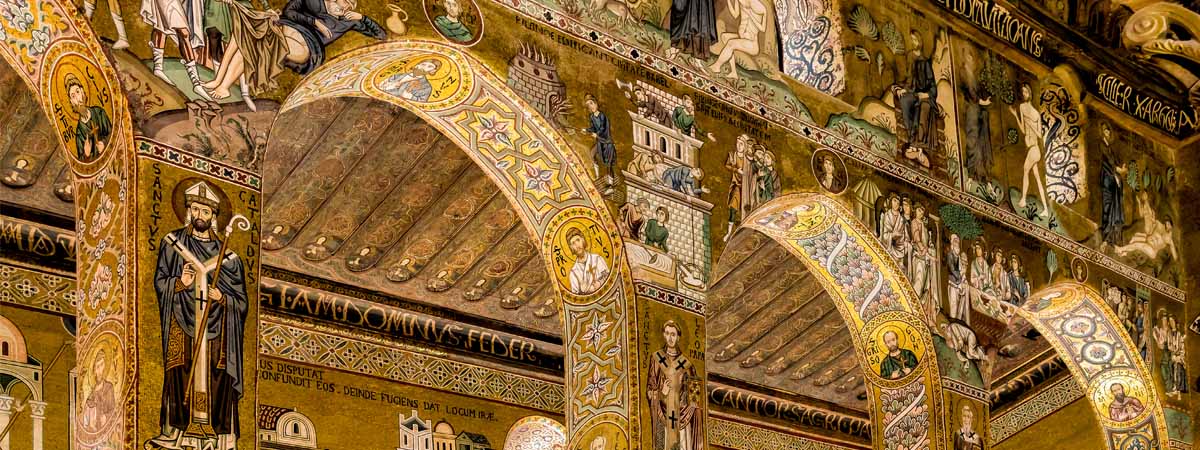
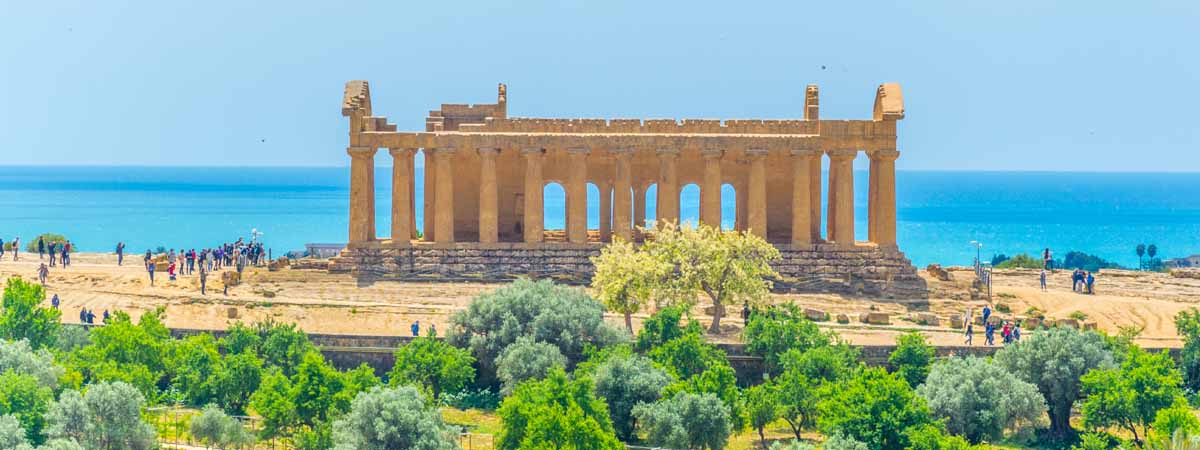
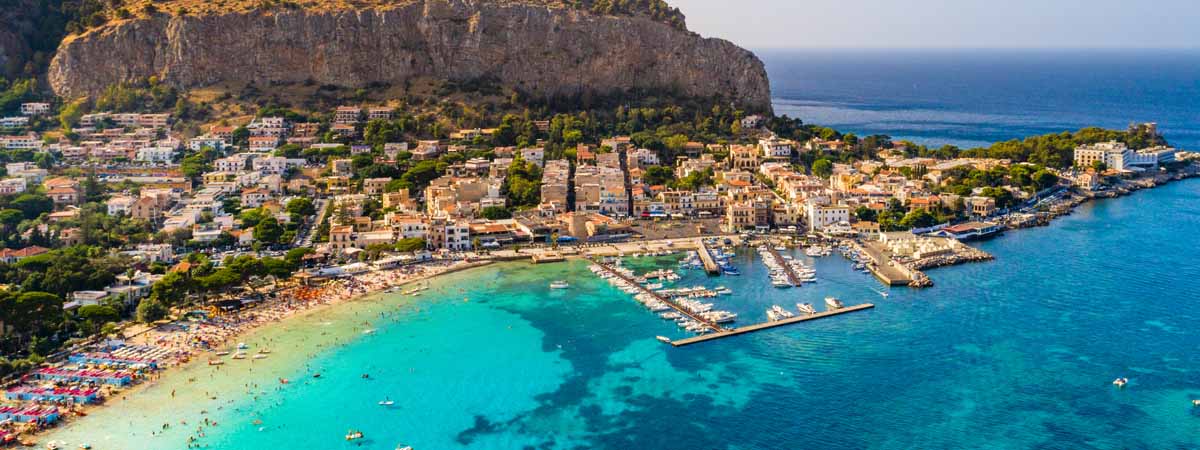
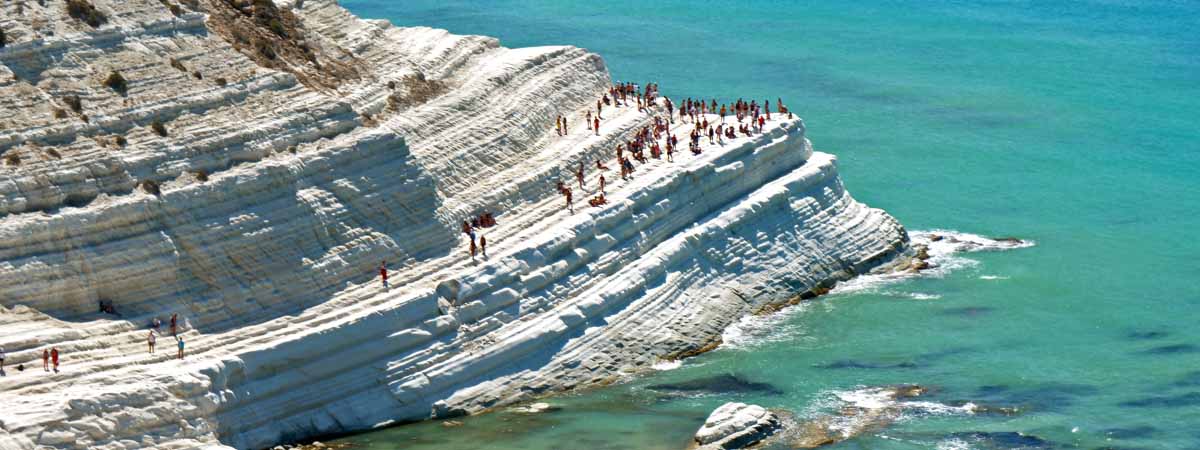
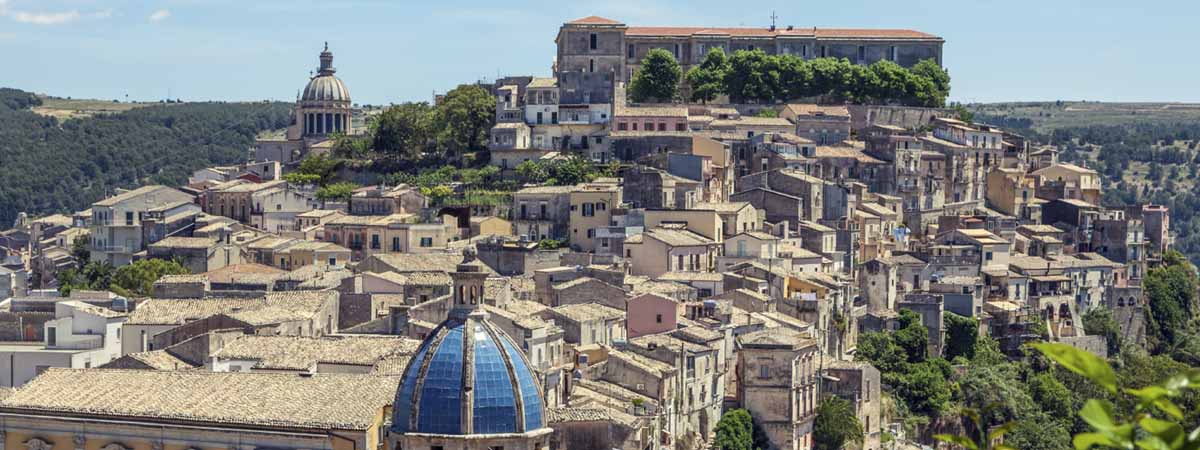

Travel Guides
